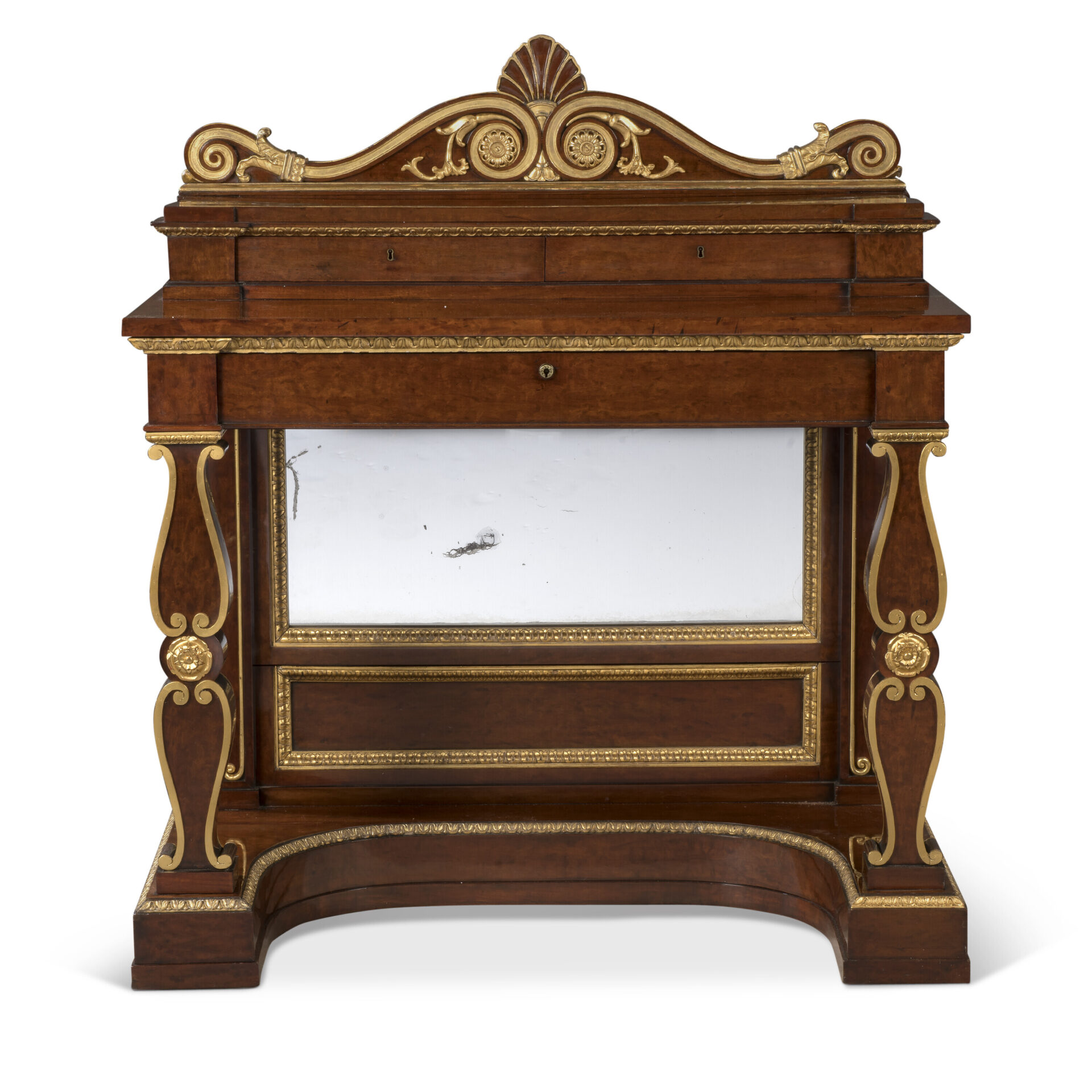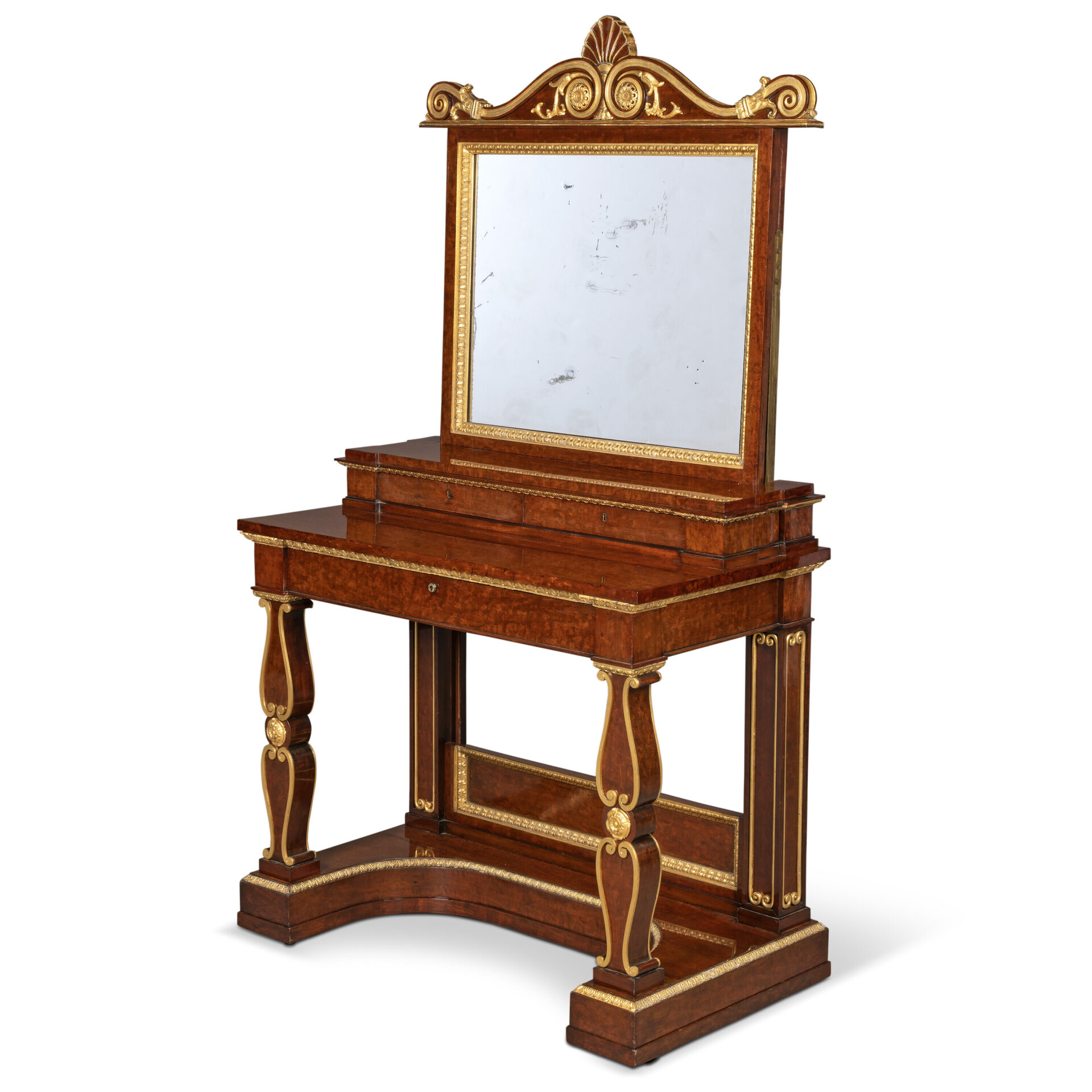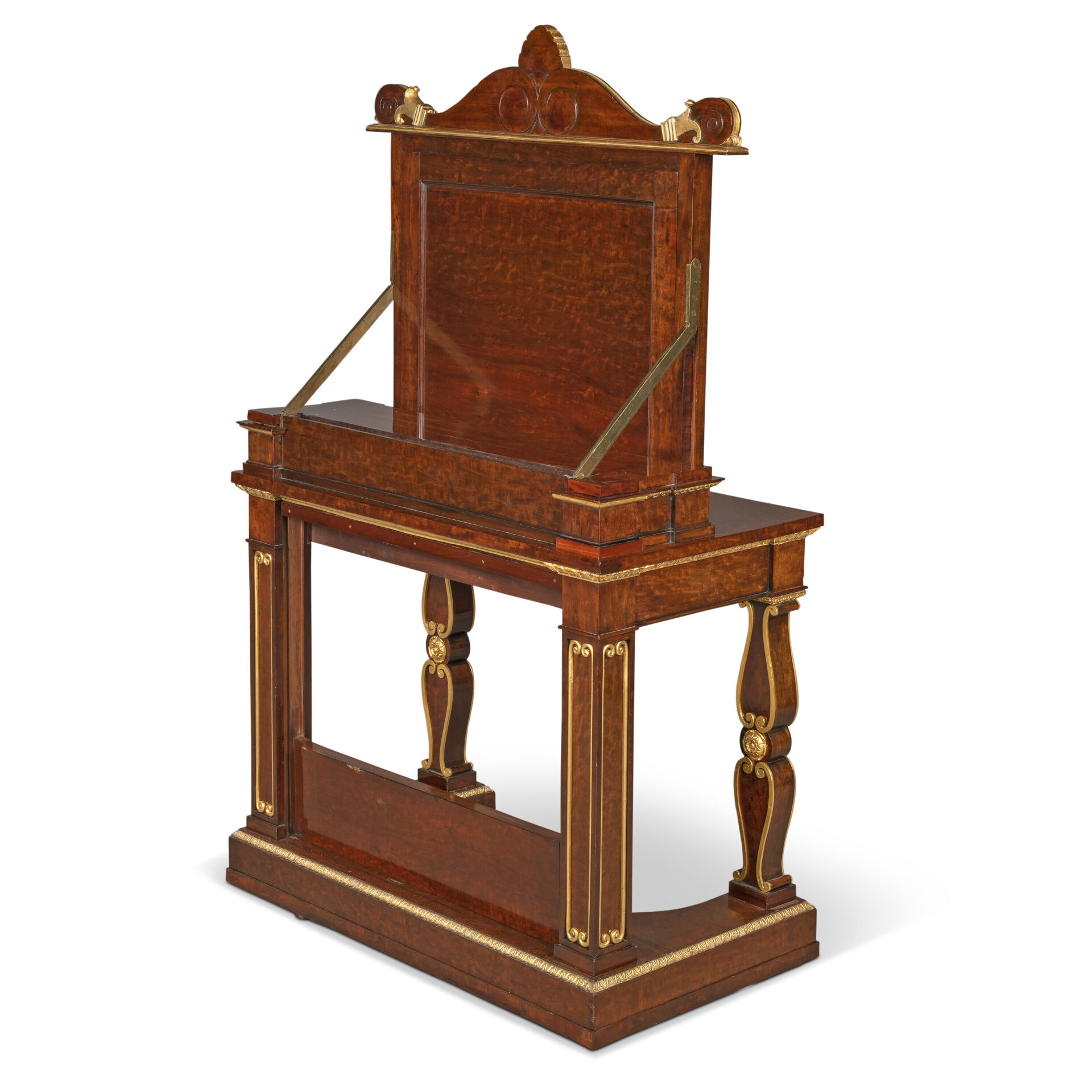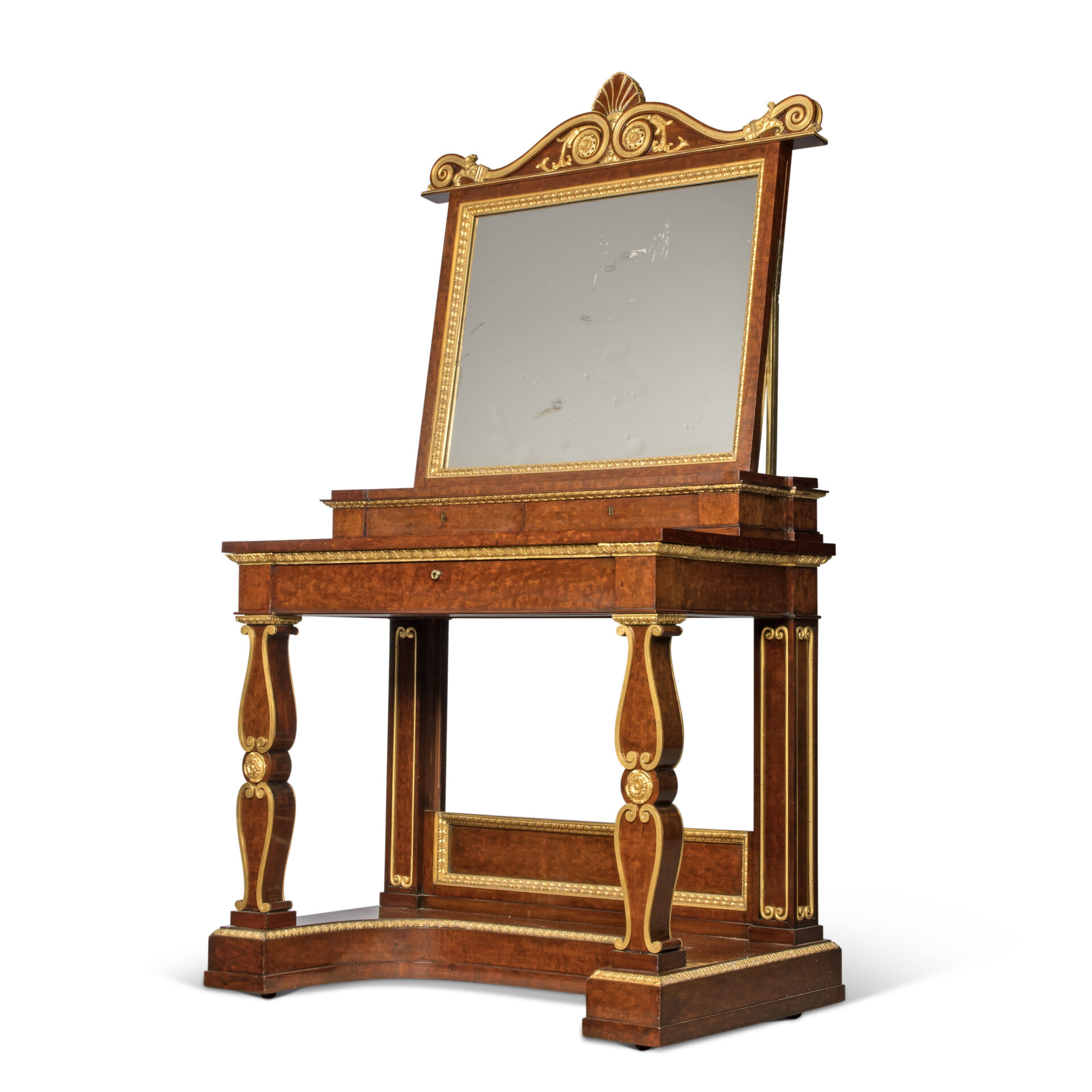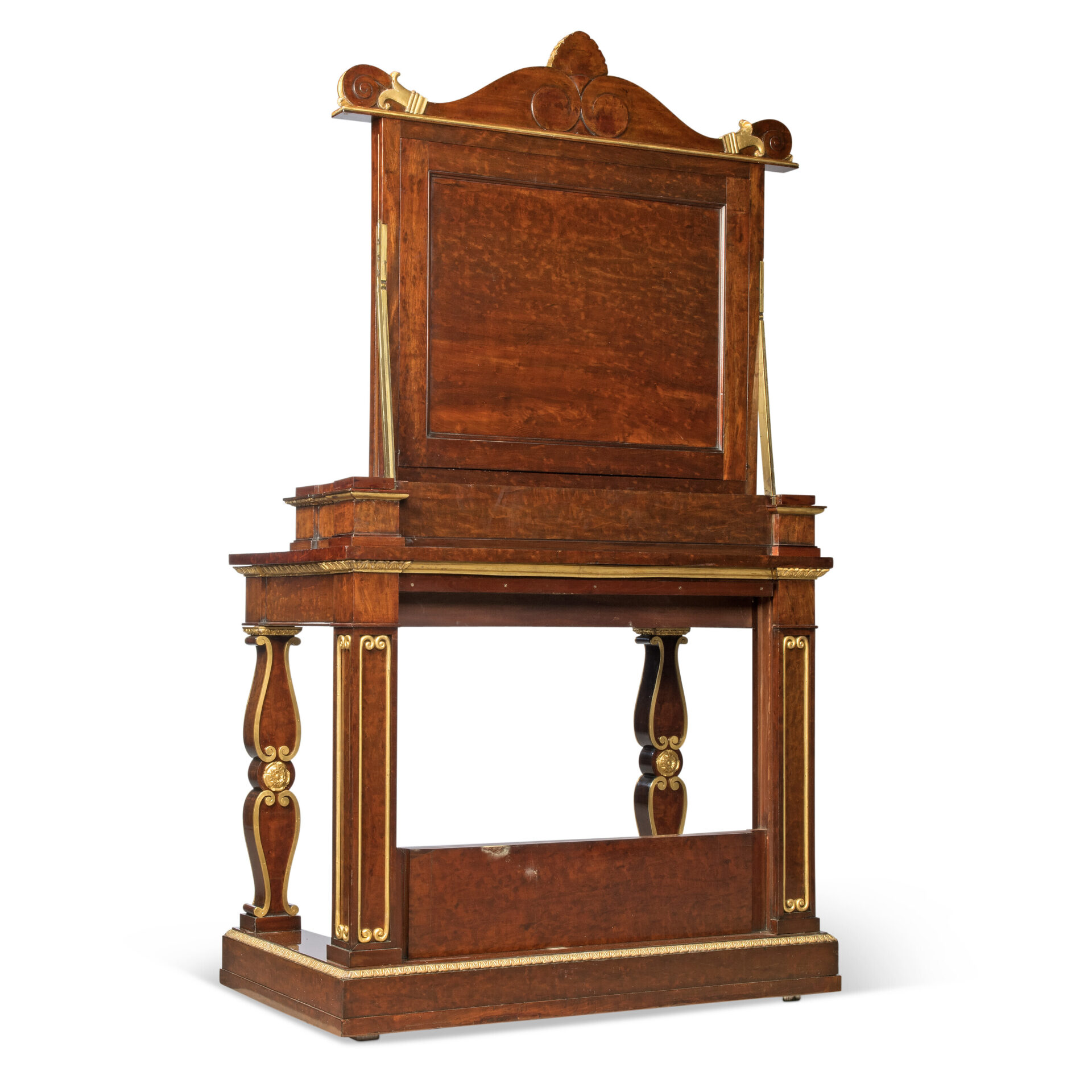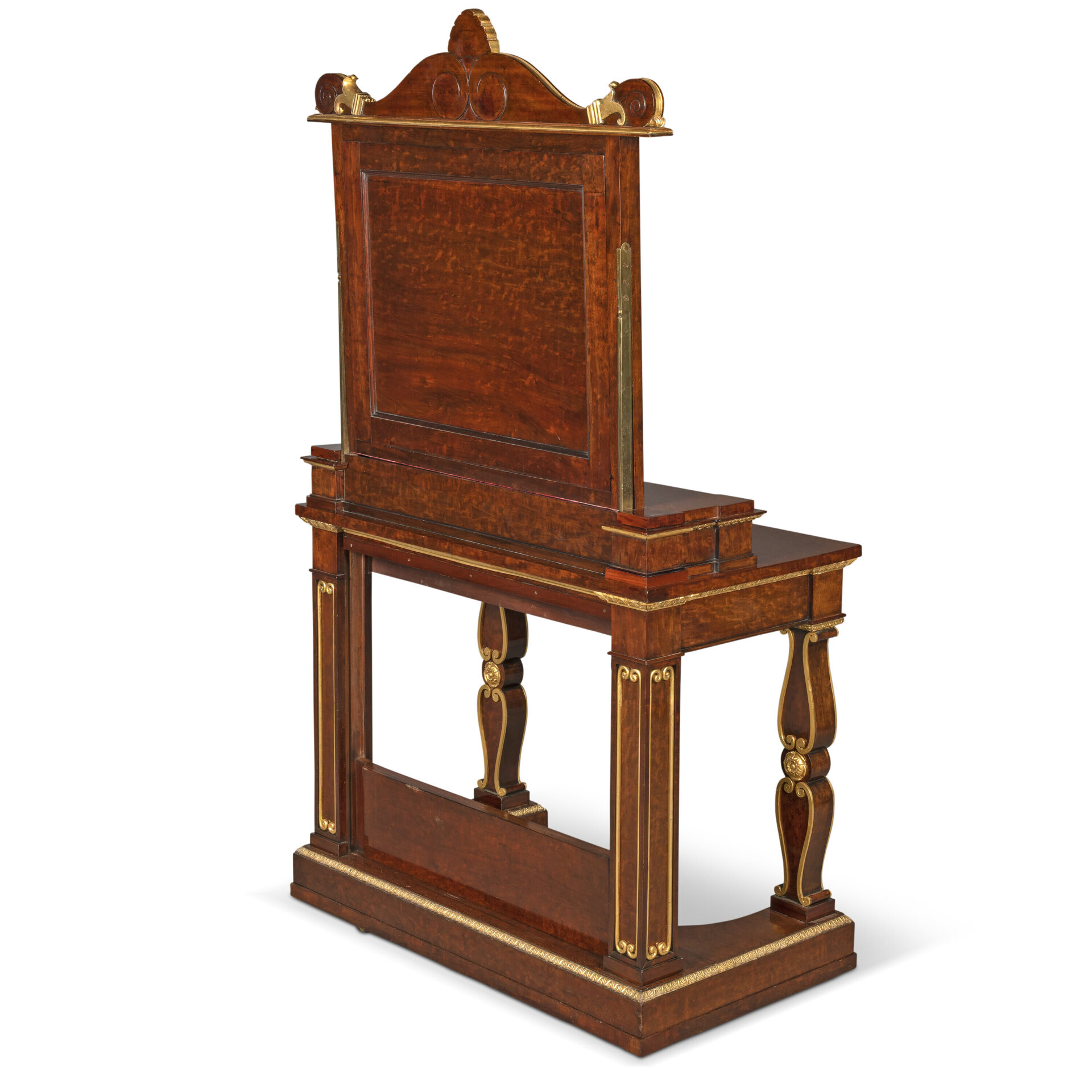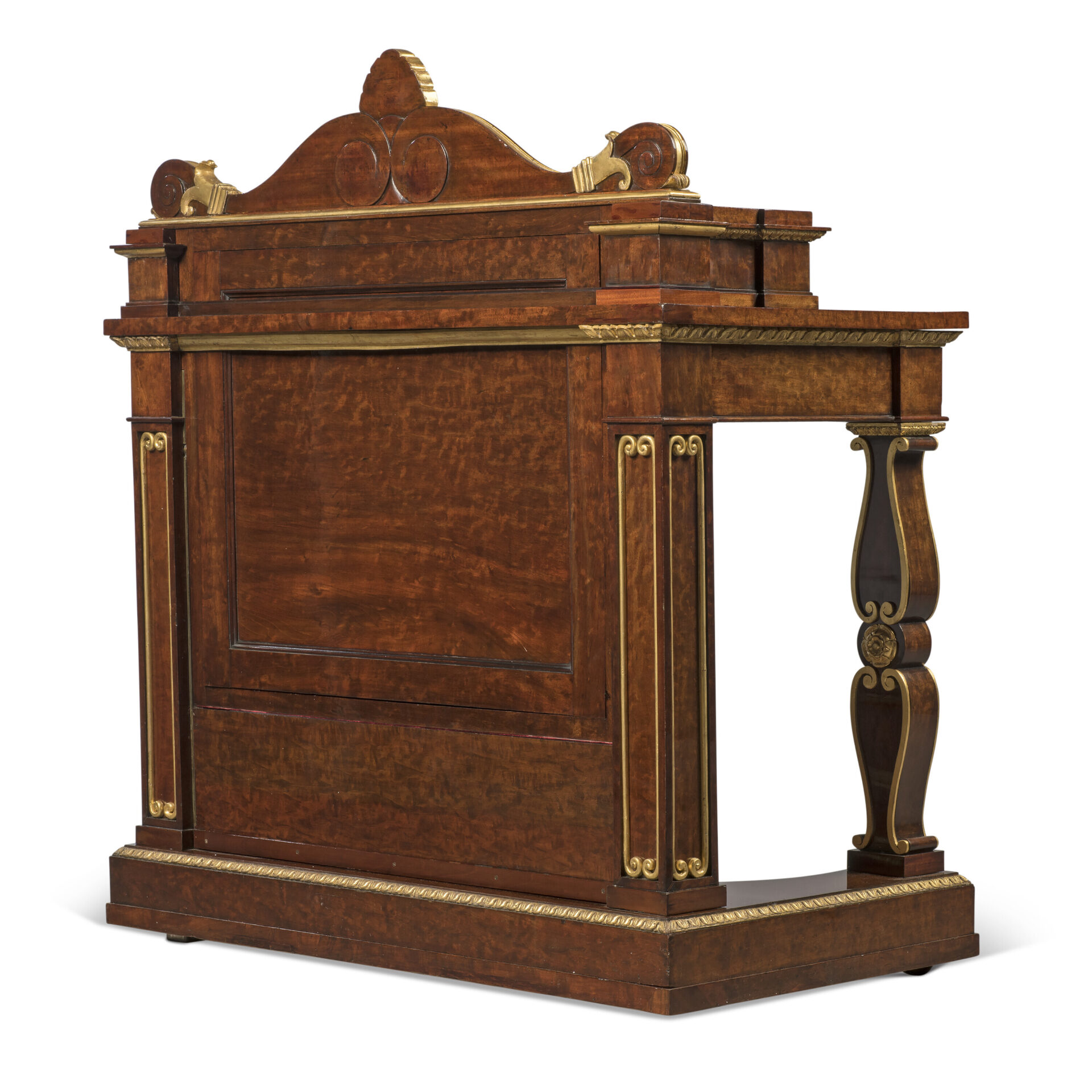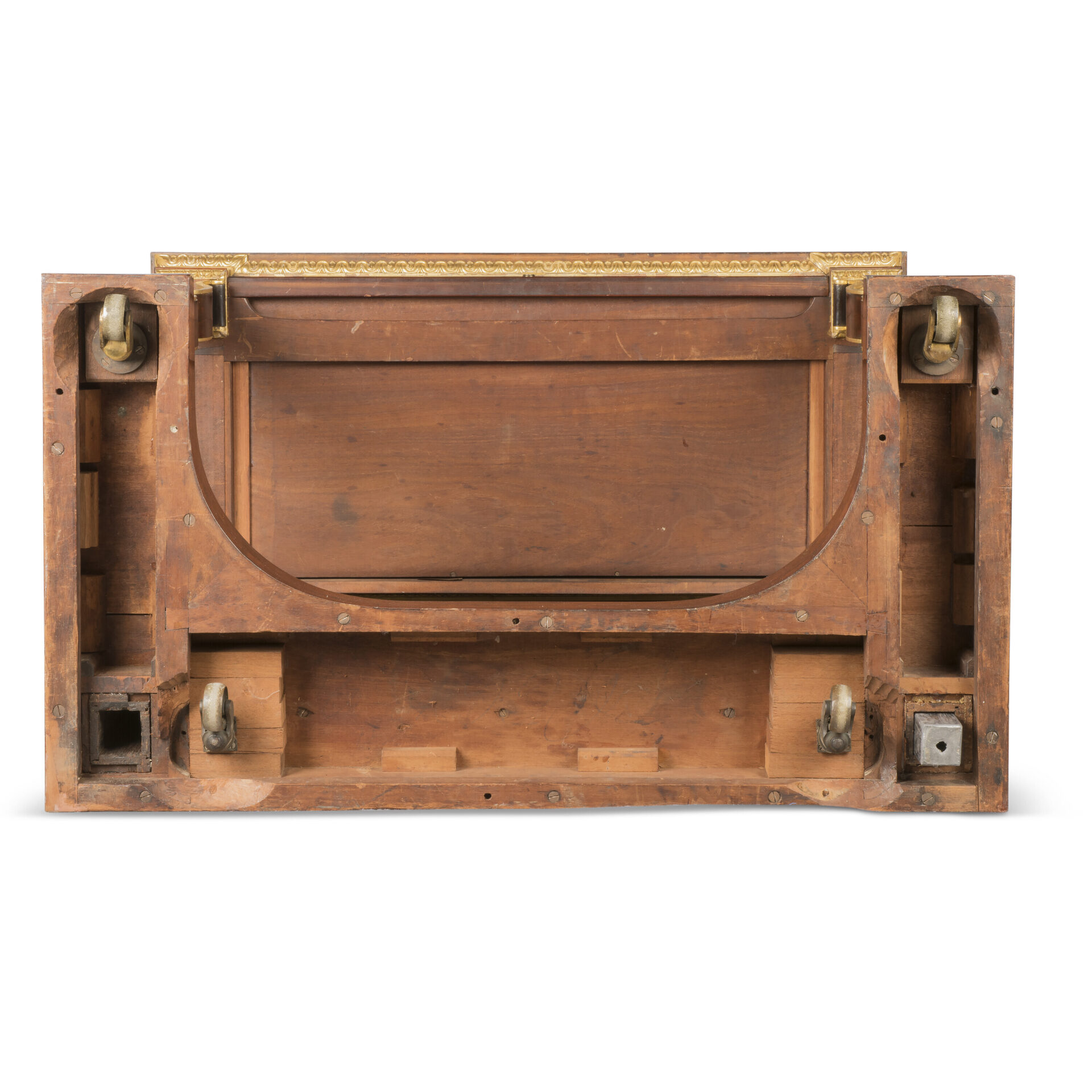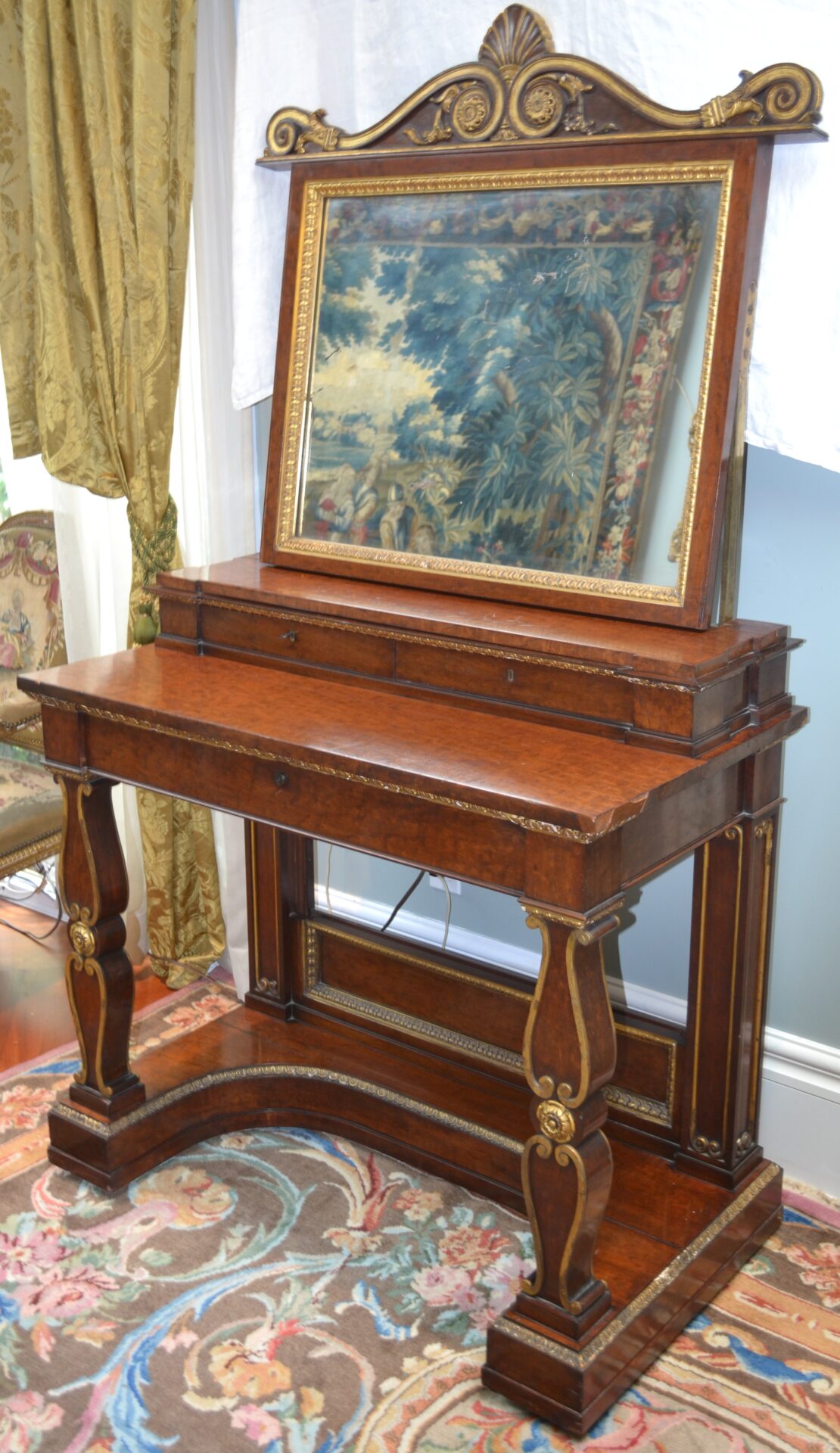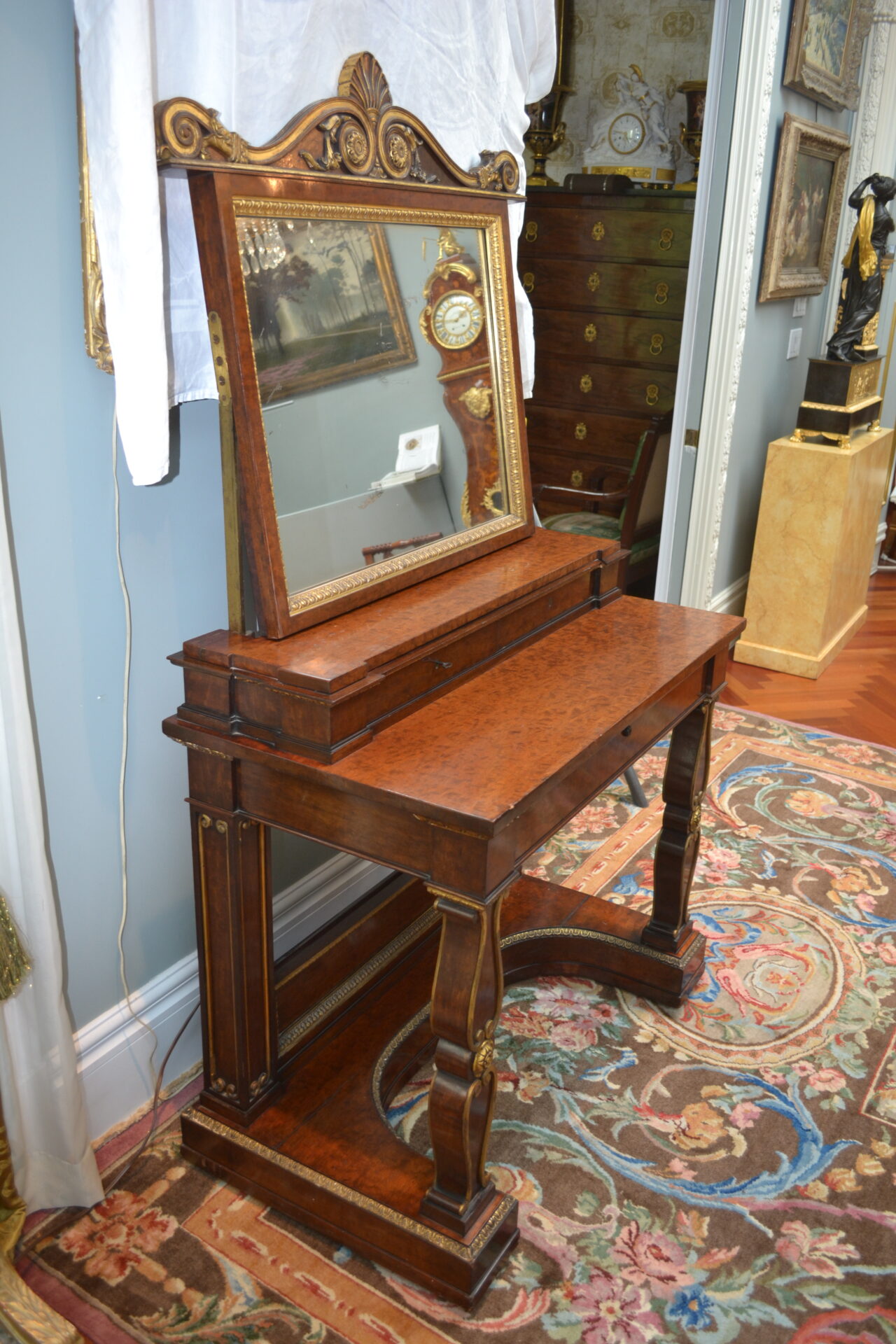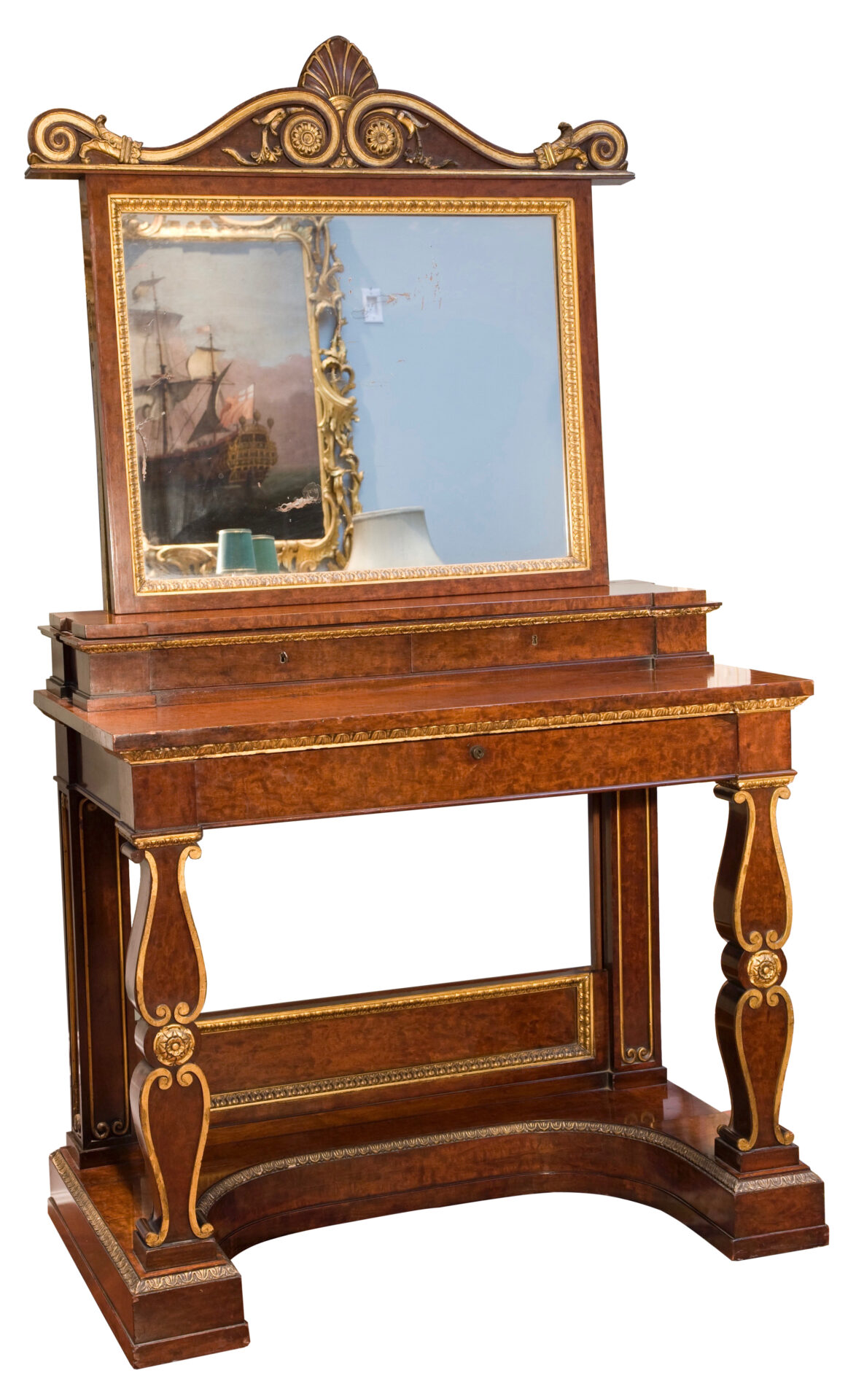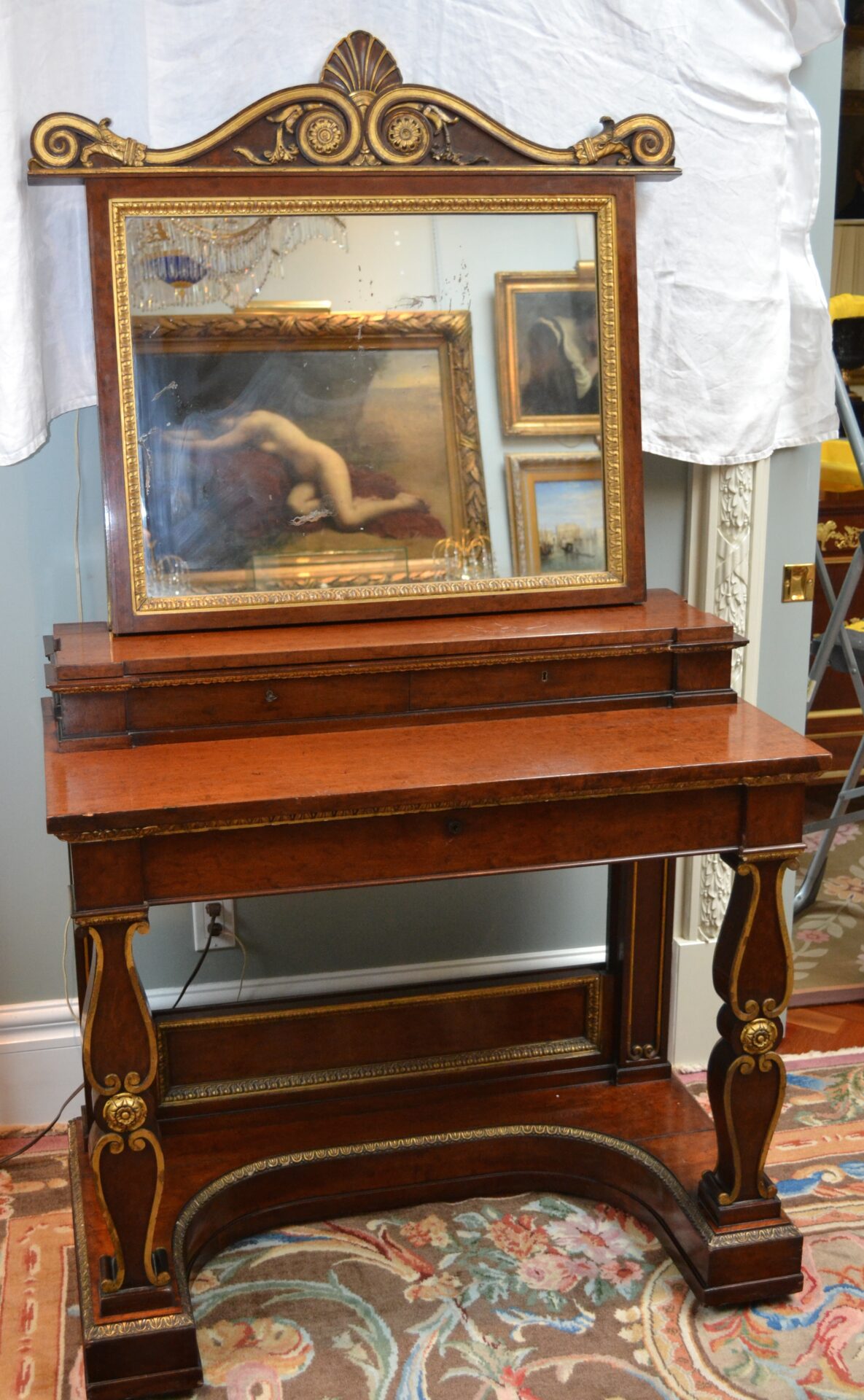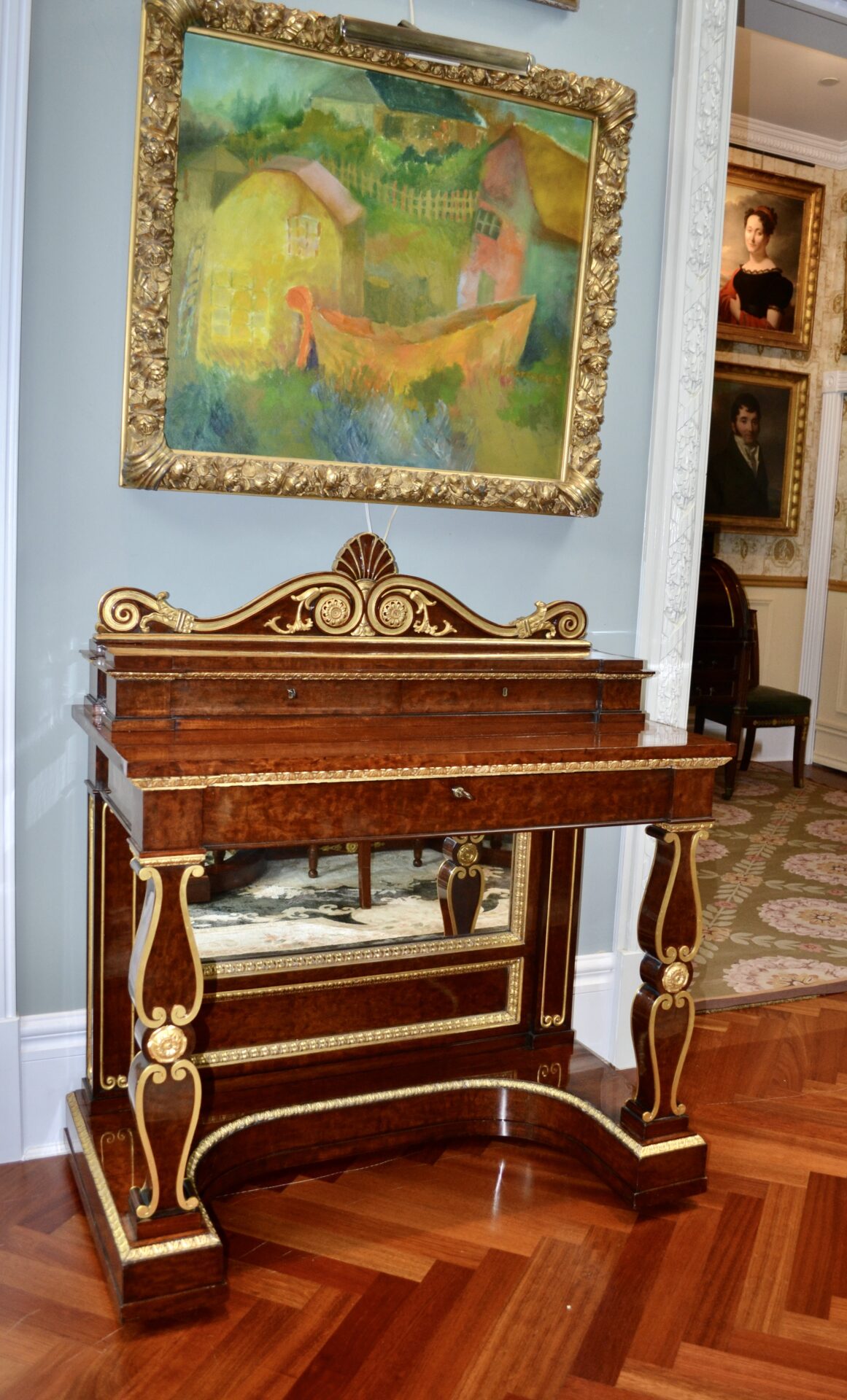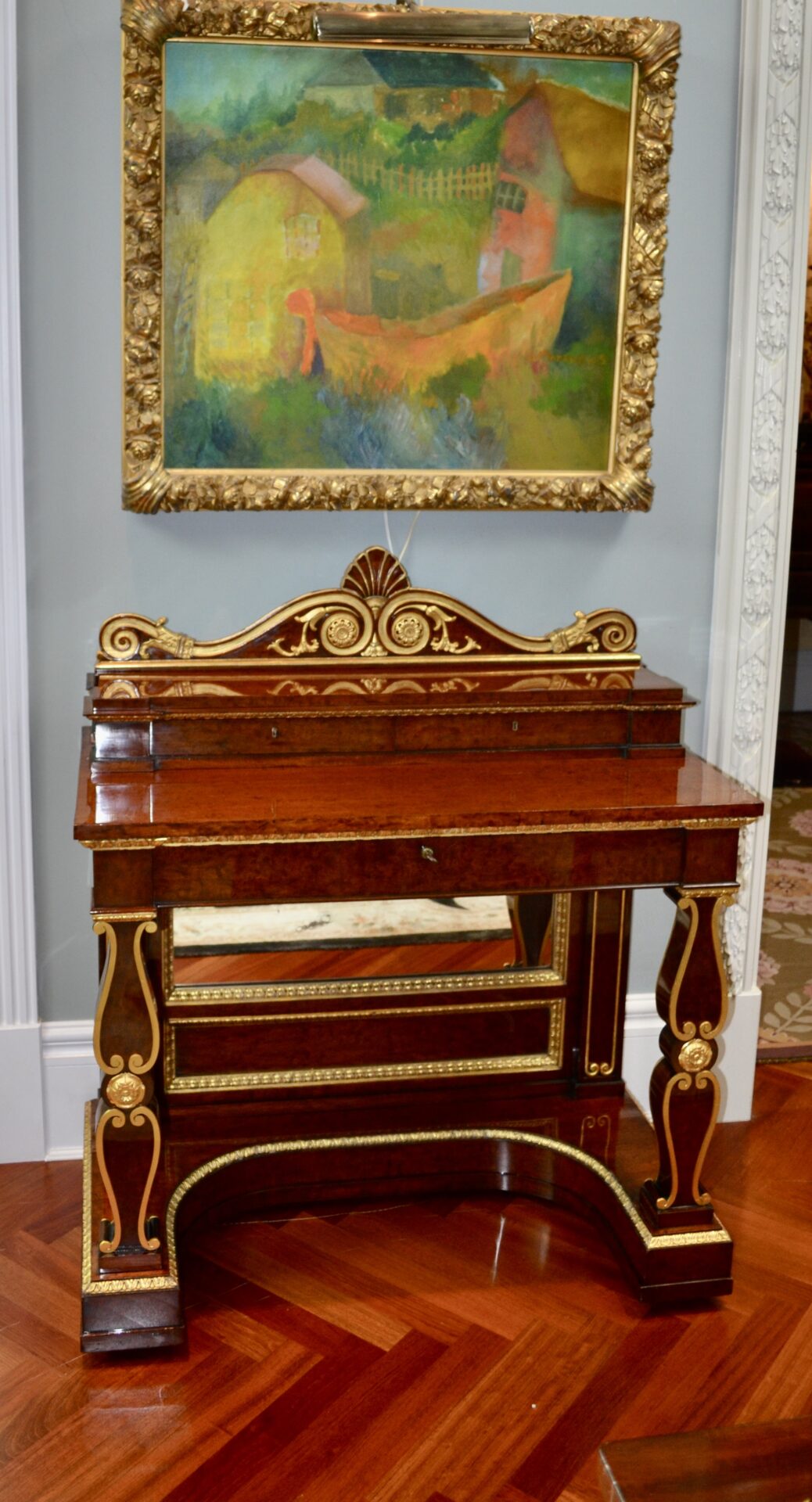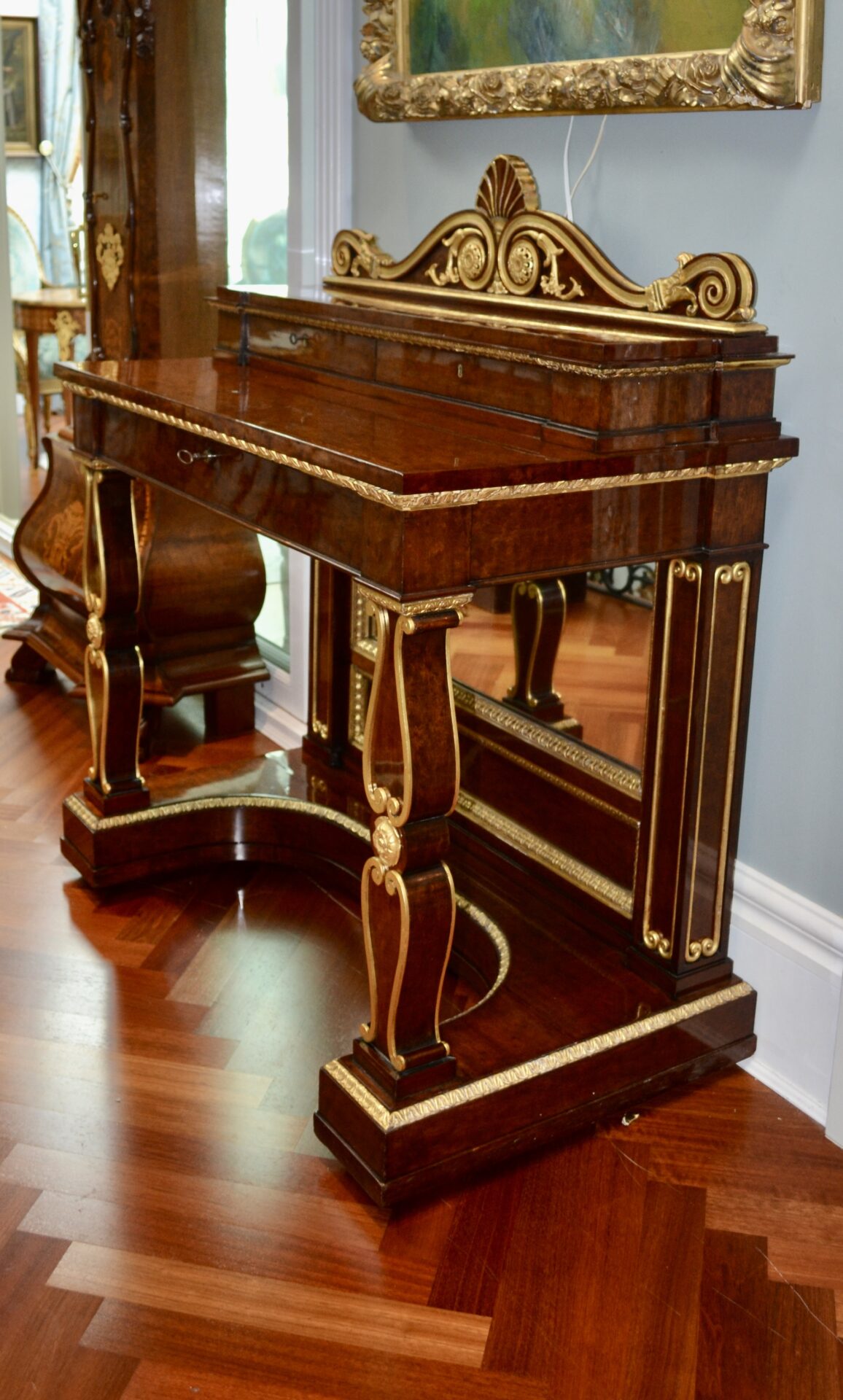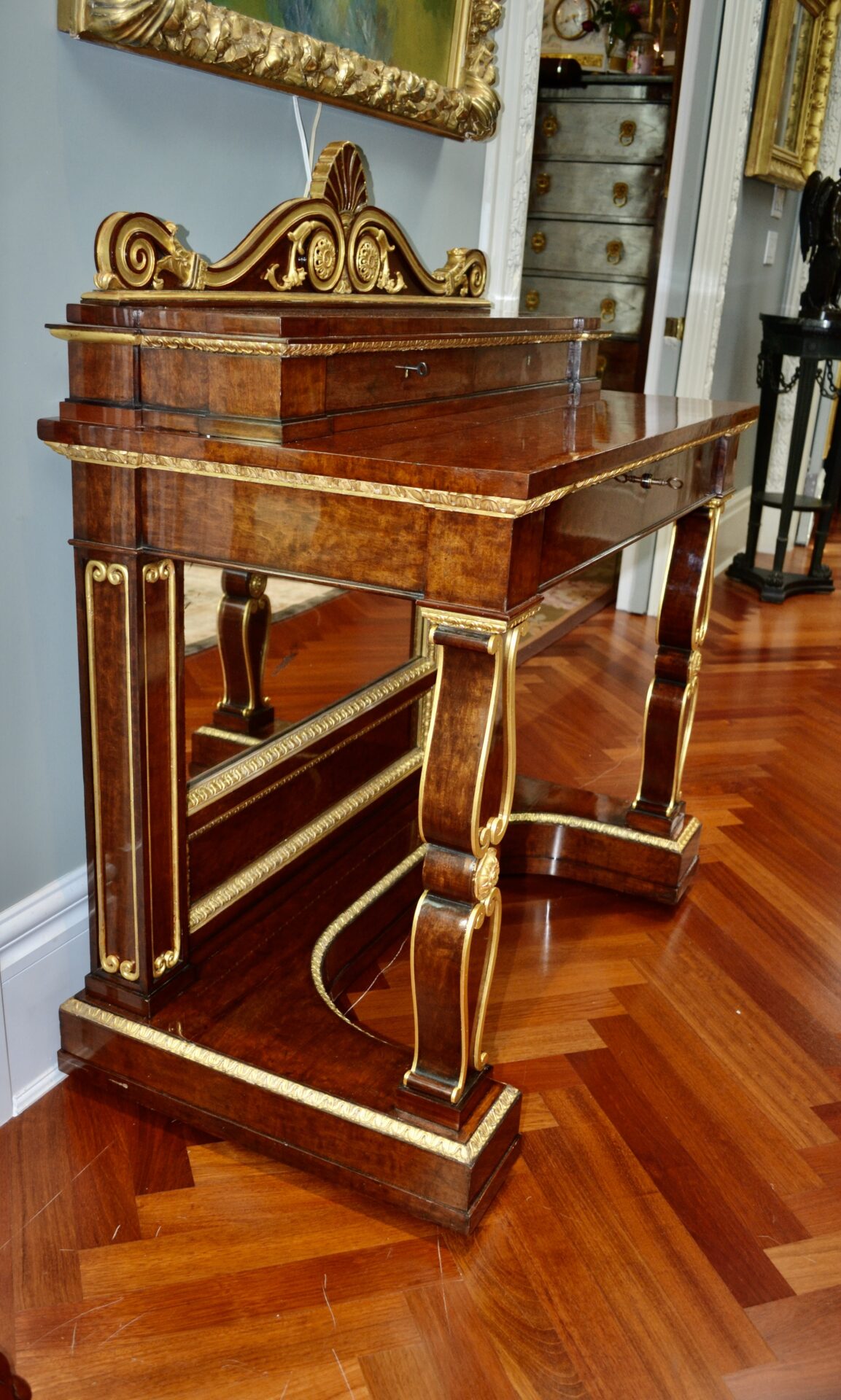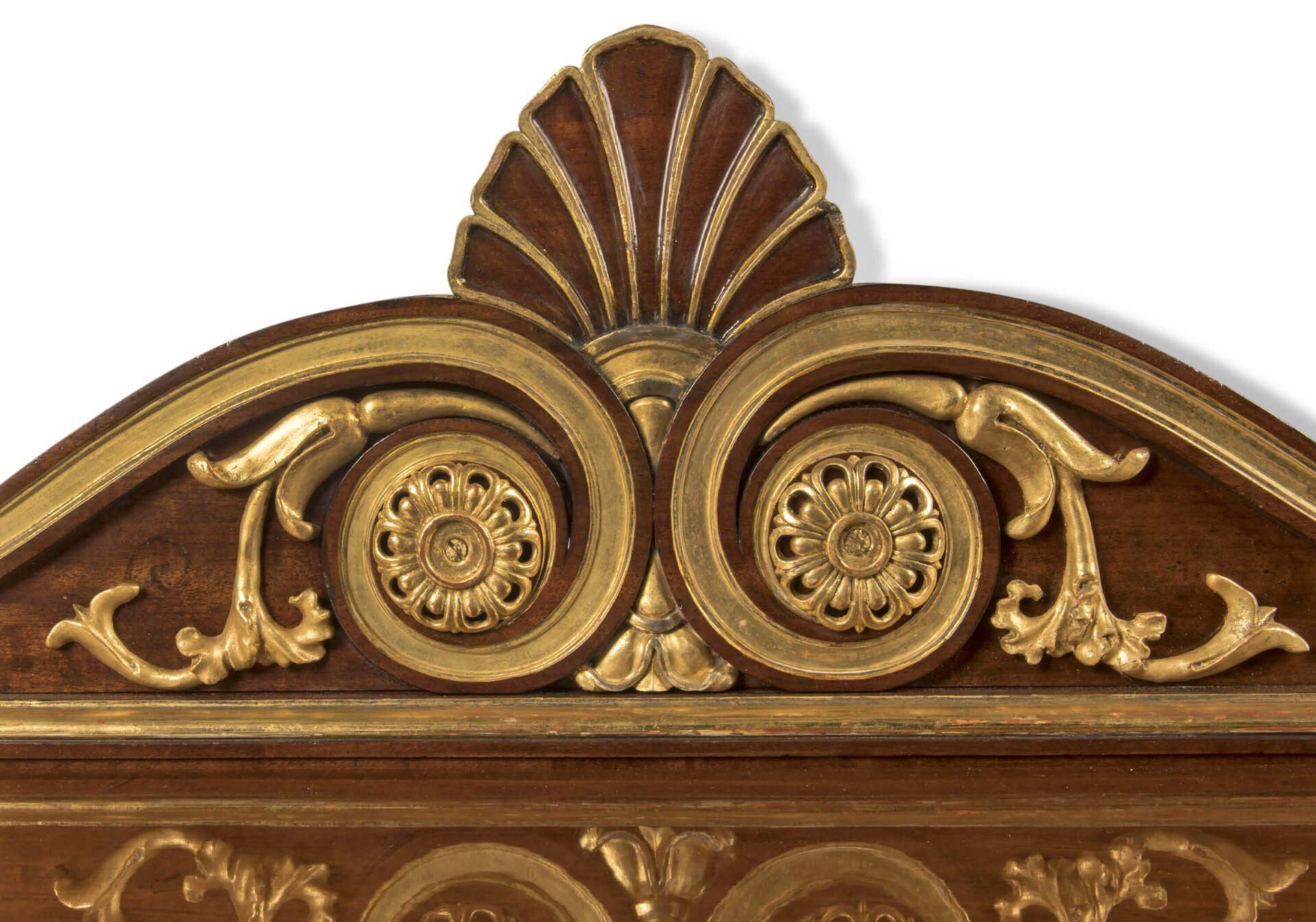An English George IV Regency Dressing Table From The Royal Collection of Windsor Castle
An exceptionally rare once in a lifetime offering of a Georgian Regency mahogany and gilt-wood Dressing Table created for and commissioned by King George IV around 1826 for a bedroom in the Royal apartments at Windsor Castle
When George III moved the Royal Residence from Carlton House to Windsor Castle in 1776 he found it neglected, inhospitable, dreary and cold. So he embarked on an ambitious process of transforming what was in fact still a castle into a palace under the direction of James Wyatt, one of the most fashionable architects of the late eighteenth century. On succeeding his father to the crown in 1820, George IV continued his father’s legacy but rather than continuing on with the Neo-gothic preferred by his father, the new King opted for the then newer English Regency style.
To execute this highly ambitious project he King engaged the renowned 18th and 19th Century English Furniture Designer and Maker Morel & Seddon to design and manufacture Regency furniture initially for the state apartments but which was later expanded to include other parts of the palace.
Morel & Seddon remained the principal suppliers of furniture and furnishings to George IV during his extensive refurbishment of Windsor Castle, between 1827–30. Their lavish interior decoration helped re-establish Windsor as both the principal seat of the British monarchy and the leading example of the English Regency movement.
Nicholas Morel had first worked for George IV when he was Prince of Wales, supplying furniture to both Carlton House and the Royal Pavilion in Brighton in the late 18 Century. In 1826 he was appointed to furnish the new royal apartments at Windsor Castle, which were then being remodeled by Sir Jeffry Wyatville. For this project Morel struck a bushiness relationship with George Seddon, whose well-established family firm was probably the only one large enough to cope with this immense commission.
Morel & Seddon ultimately furnished 59 rooms at Windsor Castle. The dressing table on offer was in fact one of these pieces of furniture. To plan how the king’s existing furniture would be re-used, the partners worked partly from a ‘Pictorial Inventory’ made up of 214 coloured drawings of objects made in Paris by A.C. Pugin. Morel & Seddon then drew up a series of ‘miniature designs’ for the king showing their intended schemes of curtains, upholstery and furniture. The surviving designs, most of which are in the Royal Collection, are an outstanding record of the grandest of late Georgian taste in interior decoration.
The English Art Historian Hugh Roberts was able to capture the scope of this project in a book titled ” For the King’s Pleasure: The furnishings and Decoration of George IV’s Apartments at Windsor Castle” published in London in 2001. Mr Roberts described the State Apartments as “a superb sequence of rooms widely regarded as the finest and most complete expression of later Georgian taste.
This dressing table was almost certainly intended for room 244 a bedroom within a suite of rooms in the Lancaster Tower, (see Roberts, pp 365 – 370). This is recorded in the Windsor inventory accounts and is described in detail thus ” A dressing table of fine mahogany, polished frieze containing the drawers and supported by double scroll truss standards in front and pilasters at the back resting on a curved plinth with improved casters, the top finished with a small case with two drawers, the back paneled and containing a large toilette glass, framed to rise and fitted with brass jointed folding supports, the whole paneled and enriched with carved foliage mouldings rosettes, etc. and surmounted by a richly carved double scroll and fan ornament with foliage rosette, etc. gilt in the best manner with matt and burnished gold [Roberts ibid.,pp 365–370 and pp 350–351} It corresponds closely to another dressing table in the account [ no 626} which is presently in the collection of the Hessiches Landesmuseum in Kassel Germany.
The later labels on the dressing table, (refer to photograph gallery), indicate that the table was moved from the Lancaster Tower to other parts of the palace and ultimately ending up in Winchester Tower in 1869.
What happened to the table and other pieces of furniture after that is not known. Windsor Castle was the residence and place of refuge for King George VI and his family in World War II. It is conceivable that some furniture might have been sold by the Royal Family at some point in the first half of the 20thC. This of course could only be verified by archival research of the Royal Collection at Windsor Castle.
The present owner acquired the table in the early 1970’s from an antiques dealer in Toronto Canada who in turn had just acquired the table from the London Trade.
Dimensions: 46.5″ H x 41″ W x 23″ D

